
People think of loyalty as a customer for a lifetime, but it is really much simpler than that. It’s about the next time, every time. – Shep Hyken
No matter if you own a mom and pop shop at a street corner or run a multinational apparel brand, loyal customers are driving your business forward, one transaction at a time.
However, brand loyalty has become just another ‘buzz-phrase’. Moreover, the sad part is that as organizations get larger and more complex, their customers are reduced to mere numbers. Contemporary businesses are on a rampage to retain customers with mouth-watering discounts and offers. But being a temporary fix, it is not helping them stop customers from disappearing into thin air once the offers dry out.
In addition, there is an over-abundance of loyalty programs in the market which are ‘all talk and no action’. Instead of improving the customer experience (CX), such programs are more about price discounts; it’s no wonder that customer retention has become more challenging than ever before.
How can you increase customer brand loyalty consistently and build it into your company’s culture?
Well, Zappos CEO, Tony Hsieh might have the best answer. He explains, “On any given day, about 75% of our orders are from repeat customers. Our whole philosophy is to take most of the money we would have spent on marketing and put that into the customer experience.”
Rethinking Brand Loyalty
What is brand loyalty? How to build brand loyalty? Even the most shrewd C-level executives are asking these questions more than ever before and rightly so.

There is an out and out need to rethink what brand loyalty really means. Just showering pointless reward points or loyalty cards is not enough to build brand loyalty. Most businesses make the mistake of thinking of brand loyalty as a one-way street, however, loyalty towards a brand cannot be determined solely based on the actions of a customer.
Instead, to define brand loyalty, you should turn it upside down. Start measuring loyalty in terms of the degree to which your business is loyal to customers rather than vice versa. Here is what this new school of thought looks like:
The old school of thought: “What have my customers purchased from me lately?”
The new school of thought: “What has my business done for my most loyal customers?“
By making a gradual shift to this viewpoint you’ll retain more customers and attain a better understanding of the psychology behind brand loyalty.
Top 10 Strategies for Building Brand Loyalty That Lasts
Strategy 1: Give a Personal Touch to Every Email Communication
Your customers might be constantly ranting about the infinite emails they receive, despite that email is still a remarkably effective communication channel. While sharing marketing emails to advertise your products may work just well. Floating highly personalized emails can prove to be a game-changing move.
According to a Statista report, emails with a personalized message had an open rate of 18.8% compared to just a 13% open rate of impersonal emails.
Example: Adidas might be one of the most popular sportswear brands in the world, however, despite their size you’ll never find them taking their customers for granted. This is evident in the emails they share with their target audience. When it comes to sportswear, Adidas has two primary kinds of audience- Men and Women. The brand refrains from sharing generic emails and targets them based on gender to generate the desired results from their email campaigns.
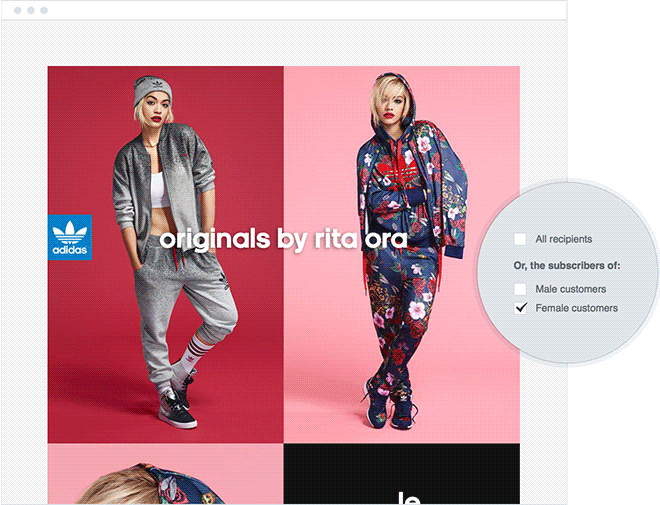
Image source: Campaignmonitor.com
Strategy 2: Connect With Your Customers using ‘Emotional Branding’
Emotions are the driving force behind a majority of purchase decisions. You might have heard of the term ‘Brand Intimacy’ which depicts how intimate and close your customers are with your brand. Fostering an emotional connection with your users can boost customer brand loyalty as a study by customer thermometer showed: 65% of participants mentioned that being emotionally connected to a brand made them purchase more often.
Example: Think of brands that people love the most and you would most likely find Apple on the list. Over the years, Apple has mastered this art of appealing to crucial human emotions. In its marketing campaigns, Apple brands itself as a platform to explore one’s creativity, be respected by society, and belong to a community of people who believe in technological advancement. It’s no wonder that users across the world connect with this brand.
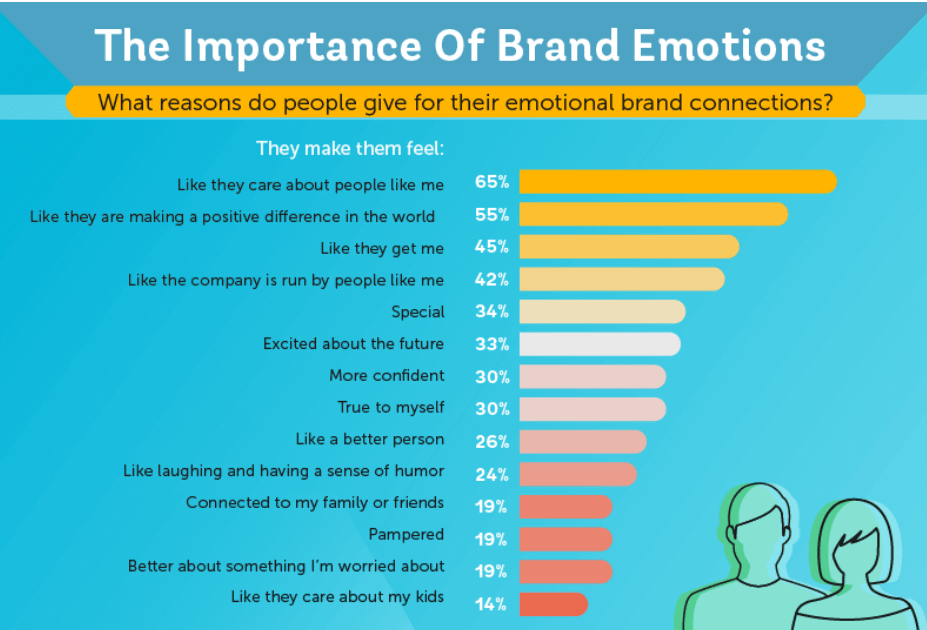
Image Source: Customerthermometer.com
Strategy 3: Leverage Social Media for Constant Engagement
You can never anticipate the number of people that can be reached using a single post as it only takes that one initial share to make a post go viral. Consistently engaging with your customers on social media channels is the key to coming across as a brand they can resonate with and stay loyal to.
To put things into perspective- according to a recent report, in 2019, an estimated 2.95 billion people were using social media worldwide. This clearly shows the sheer number of potential users you can reach over any social media platform.
Example: If there is one brand that’s killing it on social media it has to be Starbucks. Whether you’re talking about sharing customer stories or posting content with attention-grabbing captions, Starbucks has secured the right solutions to social media engagement.
Throughout the COVID-19 pandemic, the brand has looked to spread smiles through consistent engagement. Here is a glimpse of its initiative to offer free coffee to the frontline warriors in selected US stores.
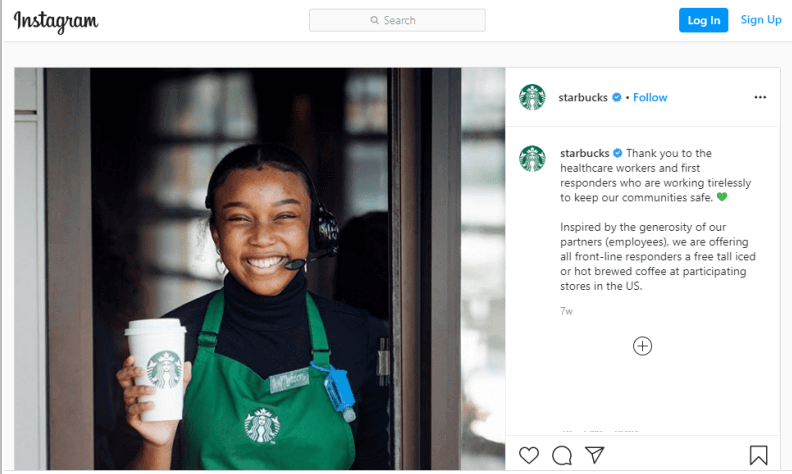
Image Source: Starbucks- Instagram
Recommended Read: 9 Customer Service Stories You Should Read
Strategy 4: Bring the Focus Back to In-Store Experience
While e-commerce sales might be going through the roof, it still showcases its own set of limitations. People still wish to touch, feel, and see products before they spend a dollar. Customers perceive offline shopping as an escape from the cacophony of their busy lives and look to embrace a memorable buying experience.
The in-store shopping experience is simply irreplaceable and statistics reveal the same. In 2019, sales from retail establishments amounted to 5.46 trillion US dollars.
Example: It took IKEA, the Swedish-origin furniture company, 75 years to earn the tag of a retail royalty. IKEA stores are known to offer a branded customer experience right from the moment a visitor steps in. The global retail giant has designed its stores into numerous room-like sections that look nothing short of movie sets.
According to their brand experts, they want every customer visiting their store to have a ‘feel at home’ experience.
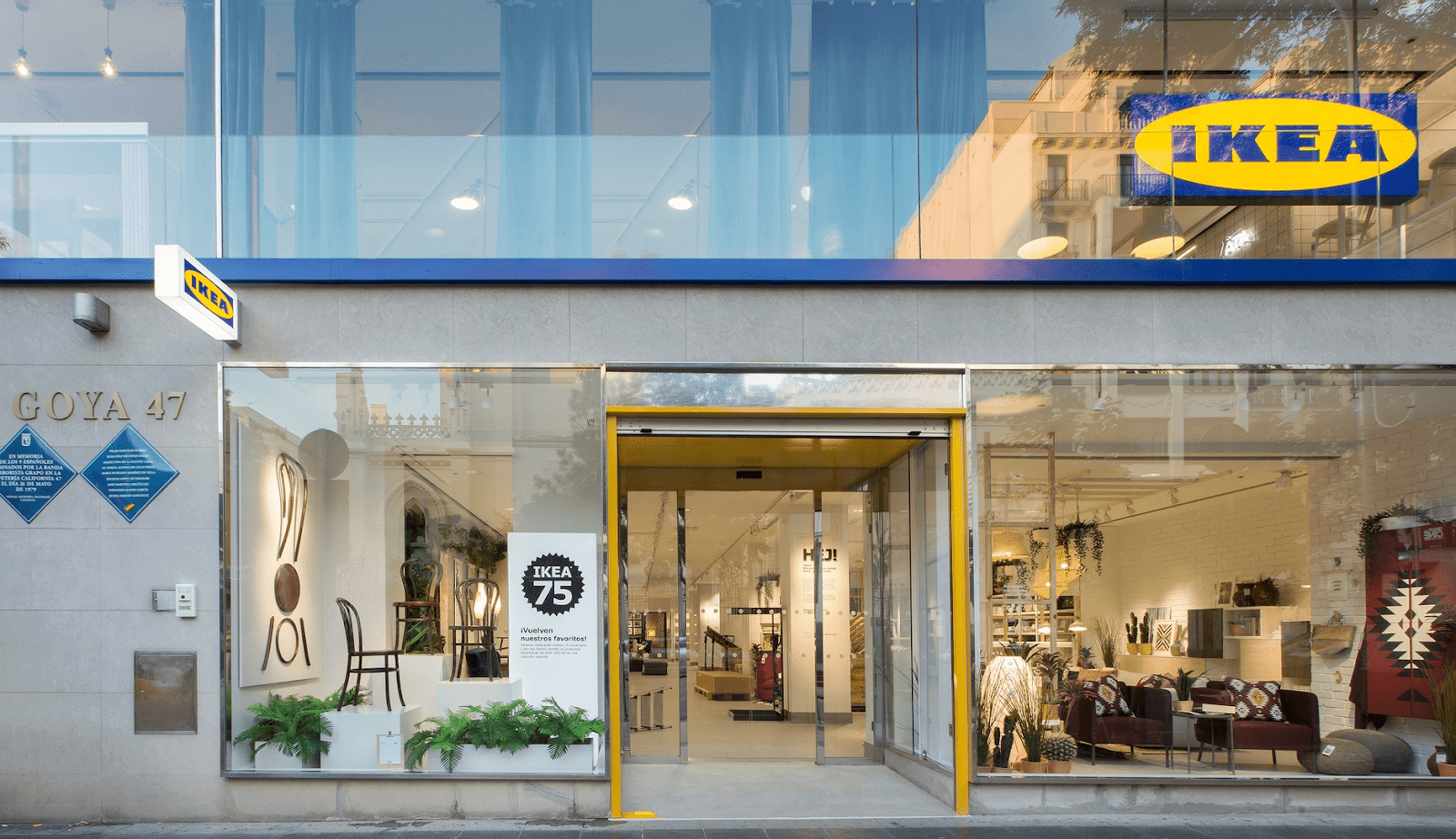
Image Source: Ikea.com
Strategy 5: Charm Your Customers on Special Occasions
Days that appear normal for your business, might actually be special occasions for your customers. To foster a deep and meaningful customer relationship, you need to keep track of your customers’ special days like birthdays, marriage anniversaries, etc. Your customer data is incomplete if such important dates are missing.
According to a survey, customers who received birthday messages from a company thought more positively about the brand. 84% of those positive reactions translated to increased brand loyalty.
Example: Sephora, the French personal care and beauty products company paid great attention to offer a delightful experience to customers on their birthdays. Its popular Beauty Insider Program seeks to offer rewards to customers on merchandise purchases.
The members of this program are entitled to receive a free product sample if they visit a store on their birthday. This initiative has made the brand save on shipping costs and increase brand loyalty, all at the same time.
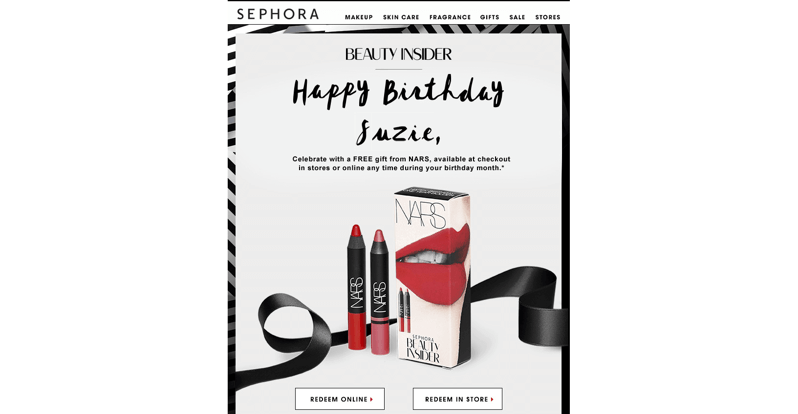
Image Source: Sephora.com
Strategy 6: Be Innovative With Loyalty Programs
While there might be different types of brand loyalty programs in the market, most fall flat as they lack a long-term perspective. There has to be a lot more to your loyalty programs than discount coupons. Contemporary businesses have realized that it is way easier and more cost-effective to sell to existing customers than new ones.
Keeping this in mind, brands are getting creative and innovative with their reward programs to create an army of loyal users.
Example: The brand, North Face has hit the bull’s eye by offering an innovative and flexible loyalty program to its regular consumers. Through its VIPeak program, customers earn points as they shop and can choose to redeem them either on purchasing new products or on memorable adventures such as a mountain climbing trip to Nepal.
So rather than offering heavy discounts, the brand chose the road less traveled and successfully encouraged customers to spend on both products as well as experiences.

Image Source: Thenorthface.com
Strategy 7: Take the Multi-Channel Route to Customer Support
You might have the best product in the market, however, an ineffective customer support process can make your customers turn to your competitors. It is important to note that customers look to seek assistance on their preferred support channel. Around 61% of customers in the US prefer phone support, compared to Email (12%) and Chat (16%). This makes it all the more important for you to adopt a delightful customer support software to seamlessly integrate all your channels.
You can use the ProProfs’ help desk ticketing system to convert every customer request into a ticket for real-time tracking and faster resolution.
Example:Since its inception in 1994, the eCommerce giant Amazon has achieved a superior service status for its effective multi-channel support. Founder Jeff Bezos has always emphasized how Amazon works towards customer-centricity, keeping customers at the center of every action that the brand undertakes. Being an online business, Amazon keeps its customers covered 24/7 via chat, email, and phone support.
To reduce support requests, it has built an informative FAQ section pertaining to popular topics like shipment, return, delivery options, and many more. This has made Amazon come out as an undefeatable leader when it comes to customer service loyalty.
Strategy 8: Turn Customers Into Brand Advocates Through Referrals
Customers love referring amazing products within their social circle and what’s better than incentivizing this action? According to a report by Nielson, 83% of people said they trust product recommendations from family, friends, and colleagues.
Rewarding customers for referring your brand to others make them your loyal brand advocates and the best part is that at the end of the day, everybody wins.
Example: Dollar Shave Club, the California-based company that sells razor blades and grooming products has adopted a simple referral strategy to retain existing users and acquire new ones. Whenever a user logs in to check shipment status, they can see the opportunity to refer to friends.
For every sign-up, the customer is rewarded with a $5 DSC credit to his/her wallet. Such credit points can be redeemed on monthly subscriptions or to simply purchase DSC extras every month.
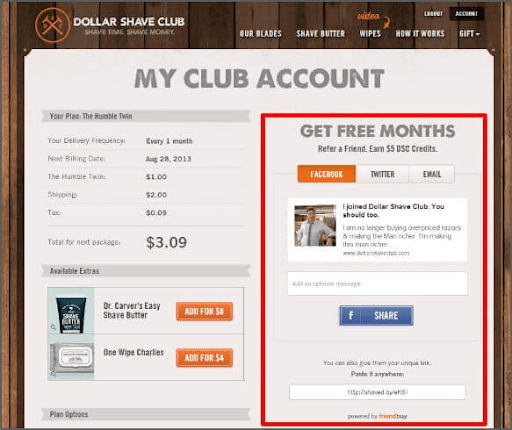
Image Source: Bluestout.com
Strategy 9: Make Your Brand More Cause-Driven
Customers buy products/services in order to serve their needs and wants. However, often overlooked, is the fact that customers can also be motivated to purchase due to a brand’s socially responsible mission and features. When your business takes a keen interest in social issues, rather than just profit-loss statements, you are bound to attract and retain custo
mers with similar values.
Example: TOMS, a shoe manufacturing, and retailing company, has always strived to be a cause-driven business. This is quite evident in their brand tagline- ‘We’re in business to improve lives’. The business attracted major attention with its ‘One for One campaign’ where it donated one pair of shoes to the needy for every original shoe purchase.
TOMS showcases a great brand loyalty example- how your business can rise above offering monetary incentives and instead offer emotional incentives to customers.
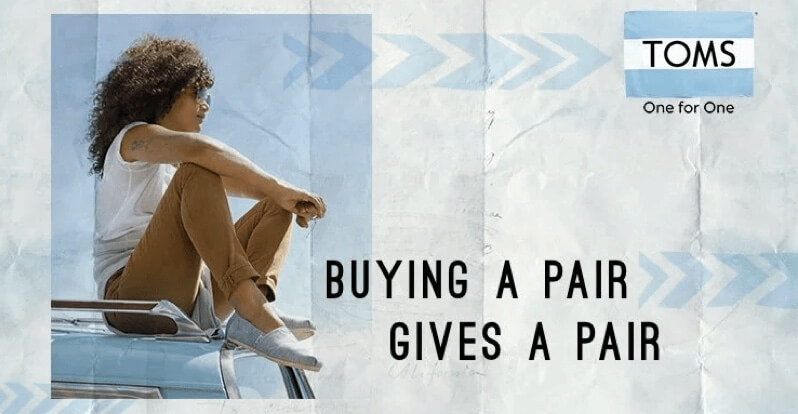
Image Source: Toms.com
Strategy 10: Acknowledge Every Room for Improvement
In the business world, perfection is a myth and the sooner you accept it the better. Nobody can help you better identify your drawbacks than your very own customers. Therefore, it becomes all the more important to float surveys and capture customer feedback at every touchpoint.
Acknowledge every mistake and convert them into your strengths. Customers love to advise businesses on how they can improve and you must be ready to lend an ear.
Example: The Uber app has more than 500 Million + downloads on the android play store. The popular ride-hailing app is known for its ease of access and polite drivers who care deeply about their ratings. Empowering customers to offer real-time feedback has allowed the brand to foster loyalty in relationships with its millions of users. Uber capitalizes on this feedback system to reward or penalize drivers and constantly improve its services.
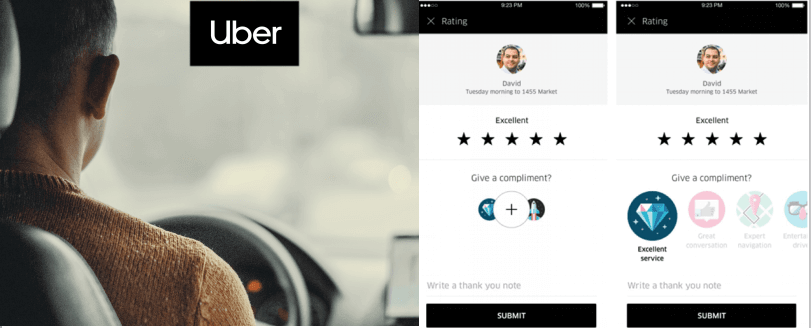
Image Source: Uber.com
Final Thoughts
There is this thing about offering impeccable experiences, your customers return in a heartbeat and stay loyal to you for years to come. These 10 strategies will help you not just improve the customer experience but also create an army of loyal customers. The best part? Loyalty is often contagious. A loyal customer base will help you market your brand and bring many potential customers to the doorsteps of your store.
Do remember that every solid approach to cultivating brand loyalty must begin with the simple idea that customers are humans with basic needs. They need to feel loved and get a sense of security that your brand cares; right from the first purchase through to subsequent interactions.
Top brands put their customers before any competitors. What is stopping you?
Q. How to retain customers and build brand loyalty?
Focusing on improving customer experiences is perhaps the best way to retain customers and make them stay loyal to your business. You must look to offer a highly personalized experience at each and every touchpoint and regularly reward your customers for staying loyal.
Q. Why is brand loyalty important?
Brand loyalty is considered a key factor in customer retention. Businesses realize that it is cost-effective to sell to existing users that go in the market to acquire new customers. No wonder that business owners are always striving to build brand loyalty.
Q. How do you build effective brand loyalty?
You can follow these effective measures to build brand loyalty that lasts:
- Add a personal touch to every communication
- Be innovative with loyalty programs
- Remember customers on their special occasions
- Capture customer feedback to improve your process
- Adopt consistency in branding
Q. Why is the customer experience key for loyalty programs?
Contemporary customers look beyond price and quality when they spend their valuable money. They are always looking forward to having a delightful experience with a brand. Due to this reason, it becomes important to focus on the experience associated with any loyal program.
Q. Can loyalty Programmes help companies retain customers and create customer loyalty?
Yes and no. While it is always a great idea to reward your loyal customers using a loyalty program. However, limiting such programs to price discounts and offers will not be sufficient. You should try to be more creative and innovative with your loyalty programs to offer them a memorable experience.
Do you want a free Help Desk?
We have the #1 Online Help Desk Software for delightful customer support





